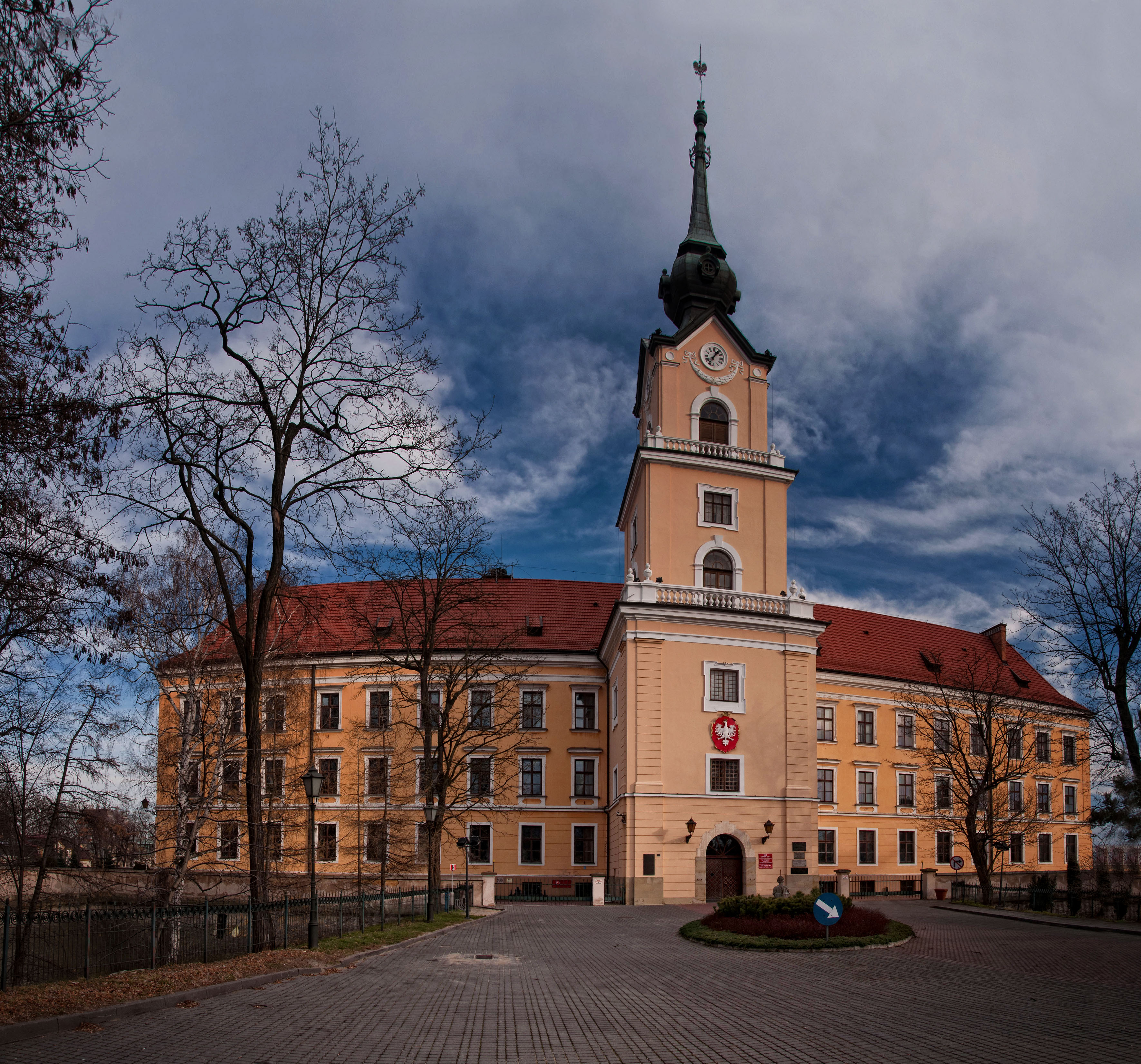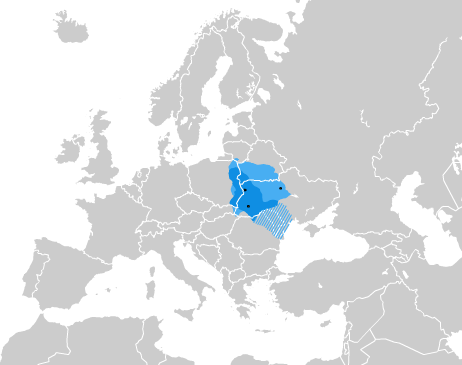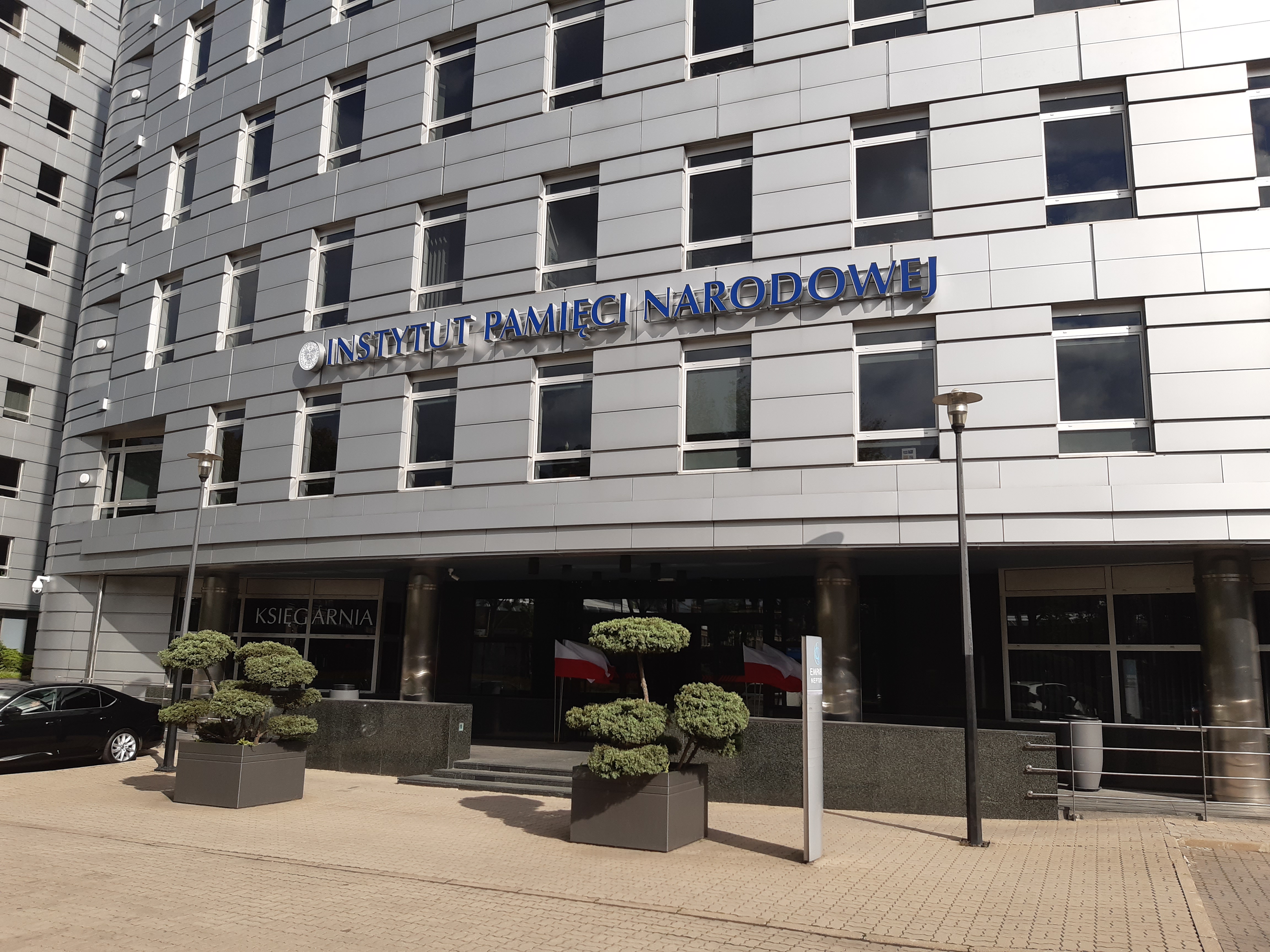|
Operation Vistula
Operation Vistula ( pl, Akcja Wisła; uk, Опера́ція «Ві́сла») was a codename for the 1947 forced resettlement of 150,000 Ukrainians ( Boykos and Lemkos) from the south-eastern provinces of post-war Poland, to the Recovered Territories in the west of the country. The action was carried out by the Soviet-installed Polish communist authorities with the aim of removing material support and assistance to the Ukrainian Insurgent Army. The Ukrainian Insurgent Army continued its guerilla activities until 1947 in both Subcarpathian and Lublin Voivodeships with no hope for any peaceful resolution. Operation Vistula effectively brought an end to the hostilities. In a period of three months beginning on 28 April 1947 and with Soviet approval and aid, about 141,000 civilians residing around Bieszczady and Low Beskids were forcibly resettled to formerly German territories, ceded to Poland at the Yalta Conference at the end of World War II. The operation was named after ... [...More Info...] [...Related Items...] OR: [Wikipedia] [Google] [Baidu] |
Ukrainian Insurgent Army
The Ukrainian Insurgent Army ( uk, Українська повстанська армія, УПА, translit=Ukrayins'ka povstans'ka armiia, abbreviated UPA) was a Ukrainian nationalist paramilitary and later partisan formation. During World War II, it was engaged in guerrilla warfare against the Soviet Union, the Polish Underground State, Communist Poland, and Nazi Germany. It was established by the Organization of Ukrainian Nationalists. The insurgent army arose out of separate militant formations of the Organization of Ukrainian Nationalists— Bandera faction (the OUN-B), other militant national-patriotic formations, some former defectors of the Ukrainian Auxiliary Police, mobilization of local populations and others.Vedeneyev, D. Military Field Gendarmerie – special body of the Ukrainian Insurgent Army'. "Voyenna Istoriya" magazine. 2002. The political leadership of the army belonged to the OUN-B. It was the primary perpetrator of the ethnic cleansing of Poles in V ... [...More Info...] [...Related Items...] OR: [Wikipedia] [Google] [Baidu] |
Subcarpathian Voivodeship
Subcarpathian Voivodeship or Subcarpathia Province (in pl, Województwo podkarpackie ) is a voivodeship, or province, in the southeastern corner of Poland. Its administrative capital and largest city is Rzeszów. Along with the Marshall, it is governed by the Subcarpathian Regional Assembly. Historically, most of the province's territory was part of the Kingdom of Galicia–Volhynia, the Kingdom of Galicia and Lodomeria and the Ruthenian Voivodeship. In the interwar period, it was part of the Lwów Voivodeship. The voivodeship was created on 1 January 1999 out of the former Rzeszów, Przemyśl, Krosno and (partially) Tarnów and Tarnobrzeg Voivodeships, pursuant to the Polish local-government reforms adopted in 1998. The name derives from the region's location near the Carpathian Mountains, and the voivodeship comprises areas of two historic regions of Eastern Europe — Lesser Poland (western and northwestern counties) and Red Ruthenia. During the interwar period ( ... [...More Info...] [...Related Items...] OR: [Wikipedia] [Google] [Baidu] |
West Ukraine
Western Ukraine or West Ukraine ( uk, Західна Україна, Zakhidna Ukraina or , ) is the territory of Ukraine linked to the former Kingdom of Galicia–Volhynia, which was part of the Polish–Lithuanian Commonwealth, the Austrian Empire, Austria-Hungary and the Second Polish Republic, and came fully under the control of the Soviet Union (via the Ukrainian Soviet Socialist Republic) only in 1939, following the Molotov–Ribbentrop Pact. There is no universally accepted definition of the territory's boundaries (see the map, right), but the contemporary Ukrainian administrative regions or Oblasts of Chernivtsi, Ivano-Frankovsk, Lviv, Ternopil and Transcarpathia (which were part of the former Austro-Hungarian Empire) are nearly always included and the Lutsk and Rivne Oblasts (parts of the annexed from Poland during its Third Partition) are usually included. It is less common to include the Khmelnytski and, especially, the Vinnytsia and Zhytomyr Oblasts in this cate ... [...More Info...] [...Related Items...] OR: [Wikipedia] [Google] [Baidu] |
Institute Of National Remembrance
The Institute of National Remembrance – Commission for the Prosecution of Crimes against the Polish Nation ( pl, Instytut Pamięci Narodowej – Komisja Ścigania Zbrodni przeciwko Narodowi Polskiemu, abbreviated IPN) is a Polish state research institute in charge of education and archives with investigative and lustration powers. The IPN was established by the Polish parliament by the Act on the Institute of National Remembrance of 18 December 1998, which incorporated the earlier Main Commission for the Prosecution of Crimes against the Polish Nation of 1991. IPN itself had replaced a body on Nazi crimes established in 1945. In 2018, IPN's mission statement was amended by the controversial Amendment to the Act on the Institute of National Remembrance to include "protecting the reputation of the Republic of Poland and the Polish Nation". The IPN investigates Nazi and Communist crimes committed between 1917 and 1990, documents its findings, and disseminates them to the publ ... [...More Info...] [...Related Items...] OR: [Wikipedia] [Google] [Baidu] |
Ukrainian SSR
The Ukrainian Soviet Socialist Republic ( uk, Украї́нська Радя́нська Соціалісти́чна Респу́бліка, ; russian: Украи́нская Сове́тская Социалисти́ческая Респу́блика, group=note), abbreviated as the Ukrainian SSR, UkrSSR, or UkSSR, and also known as Soviet Ukraine, was one of the constituent republics of the Soviet Union from 1922 until 1991. In the anthem of the Ukrainian SSR, it was referred to simply as ''Ukraine''. Under the Soviet one-party model, the Ukrainian SSR was governed by the Communist Party of the Soviet Union through its republican branch: the Communist Party of Ukraine. The first iterations of the Ukrainian SSR were established during the Russian Revolution, particularly after the Bolshevik Revolution. The outbreak of the Ukrainian–Soviet War in the former Russian Empire saw the Bolsheviks defeat the independent Ukrainian People's Republic, after which they found ... [...More Info...] [...Related Items...] OR: [Wikipedia] [Google] [Baidu] |
Timothy Snyder
Timothy David Snyder (born August 18, 1969) is an American historian specializing in the modern history of Central and Eastern Europe. He is the Richard C. Levin Professor of History at Yale University and a permanent fellow at the Institute for Human Sciences in Vienna. He has written several books, including the best-sellers '' Bloodlands: Europe Between Hitler and Stalin'' and '' On Tyranny: Twenty Lessons from the Twentieth Century.'' An expert on the Holocaust, Snyder is on the Committee on Conscience of the United States Holocaust Memorial Museum. He is also a member of the Council on Foreign Relations. Early life and education Snyder was born on August 18, 1969, in the Dayton, Ohio area, the son of Christine Hadley Snyder, a teacher, accountant, and homemaker, and Estel Eugene Snyder, a veterinarian. Snyder's parents were married in a Quaker ceremony in 1963 in Ohio, and his mother was active in preserving her family farmstead as a Quaker historic site. Snyder gradua ... [...More Info...] [...Related Items...] OR: [Wikipedia] [Google] [Baidu] |
Ethnic Cleansing
Ethnic cleansing is the systematic forced removal of ethnic, racial, and religious groups from a given area, with the intent of making a region ethnically homogeneous. Along with direct removal, extermination, deportation or population transfer, it also includes indirect methods aimed at forced migration by coercing the victim group to flee and preventing its return, such as murder, rape, and property destruction. It constitutes a crime against humanity and may also fall under the Genocide Convention, even as ''ethnic cleansing'' has no legal definition under international criminal law. Many instances of ethnic cleansing have occurred throughout history; the term was first used by the perpetrators as a euphemism during the Yugoslav Wars in the 1990s. Since then, the term has gained widespread acceptance due to journalism and the media's heightened use of the term in its generic meaning. Etymology An antecedent to the term is the Greek word (; lit. "enslavement"), w ... [...More Info...] [...Related Items...] OR: [Wikipedia] [Google] [Baidu] |
Eastern Europe
Eastern Europe is a subregion of the European continent. As a largely ambiguous term, it has a wide range of geopolitical, geographical, ethnic, cultural, and socio-economic connotations. The vast majority of the region is covered by Russia, which spans roughly 40% of the continent's landmass while accounting for approximately 15% of its total population."The Balkans" , ''Global Perspectives: A Remote Sensing and World Issues Site''. Wheeling Jesuit University/Center for Educational Technologies, 1999–2002. It represents a significant part of European culture; the main socio-cultural characteristics of Eastern Europe have historically been defined by the traditions of |
Fall Of Communism
The Revolutions of 1989, also known as the Fall of Communism, was a revolutionary wave that resulted in the end of most communist states in the world. Sometimes this revolutionary wave is also called the Fall of Nations or the Autumn of Nations, a play on the term Spring of Nations that is sometimes used to describe the Revolutions of 1848 in Europe. It also led to the eventual breakup of the Soviet Union—the world's largest communist state—and the abandonment of communist regimes in many parts of the world, some of which were violently overthrown. The events, especially the fall of the Soviet Union, drastically altered the world's balance of power, marking the end of the Cold War and the beginning of the post-Cold War era. The earliest recorded protests were started in Kazakhstan, then part of the Soviet Union, in 1986 with the student demonstrations — the last chapter of these revolutions is considered to be in 1993 when Cambodia enacted a new Constitution in ... [...More Info...] [...Related Items...] OR: [Wikipedia] [Google] [Baidu] |
Vistula River
The Vistula (; pl, Wisła, ) is the longest river in Poland and the ninth-longest river in Europe, at in length. The drainage basin, reaching into three other nations, covers , of which is in Poland. The Vistula rises at Barania Góra in the south of Poland, above sea level in the Silesian Beskids (western part of Carpathian Mountains), where it begins with the Little White Vistula (''Biała Wisełka'') and the Black Little Vistula (''Czarna Wisełka''). It flows through Poland's largest cities, including Kraków, Sandomierz, Warsaw, Płock, Włocławek, Toruń, Bydgoszcz, Świecie, Grudziądz, Tczew and Gdańsk. It empties into the Vistula Lagoon (''Zalew Wiślany'') or directly into the Gdańsk Bay of the Baltic Sea with a delta of six main branches ( Leniwka, Przekop, Śmiała Wisła, Martwa Wisła, Nogat and Szkarpawa). The river is often associated with Polish culture, history and national identity. It is the country's most important waterway and natural symbol, ... [...More Info...] [...Related Items...] OR: [Wikipedia] [Google] [Baidu] |
European Commission
The European Commission (EC) is the executive of the European Union (EU). It operates as a cabinet government, with 27 members of the Commission (informally known as "Commissioners") headed by a President. It includes an administrative body of about 32,000 European civil servants. The Commission is divided into departments known as Directorates-General (DGs) that can be likened to departments or ministries each headed by a Director-General who is responsible to a Commissioner. There is one member per member state, but members are bound by their oath of office to represent the general interest of the EU as a whole rather than their home state. The Commission President (currently Ursula von der Leyen) is proposed by the European Council (the 27 heads of state/governments) and elected by the European Parliament. The Council of the European Union then nominates the other members of the Commission in agreement with the nominated President, and the 27 members as a team are ... [...More Info...] [...Related Items...] OR: [Wikipedia] [Google] [Baidu] |
World War II
World War II or the Second World War, often abbreviated as WWII or WW2, was a world war that lasted from 1939 to 1945. It involved the World War II by country, vast majority of the world's countries—including all of the great powers—forming two opposing military alliances: the Allies of World War II, Allies and the Axis powers. World War II was a total war that directly involved more than 100 million Military personnel, personnel from more than 30 countries. The major participants in the war threw their entire economic, industrial, and scientific capabilities behind the war effort, blurring the distinction between civilian and military resources. Air warfare of World War II, Aircraft played a major role in the conflict, enabling the strategic bombing of population centres and deploying the Atomic bombings of Hiroshima and Nagasaki, only two nuclear weapons ever used in war. World War II was by far the List of wars by death toll, deadliest conflict in hu ... [...More Info...] [...Related Items...] OR: [Wikipedia] [Google] [Baidu] |









